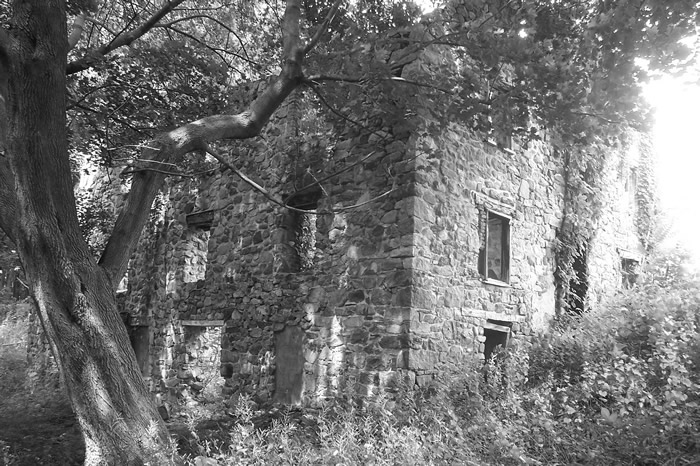
Plaster Mill of Stanhope
Sussex Co. | New Jersey | USA
Watersource: Musconetcong River.
Plaster Mill of Stanhope
Take Main Street south exit on the north side of the Muscongnetcong river from Sh 183/Ledgewood Ave. in Stanhope, turn left on Kelly Place. The old plaster mill is on the immediate left after the turn onto Kelley Place.

The stone mill was built about 1800 by a local iron company.
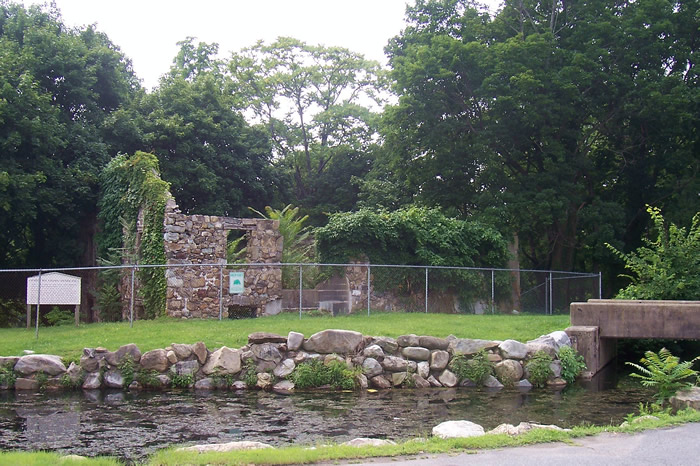
The mill was used to grind gypsum into land plaster or lime for agricultural purposes to sweeten the ph of the soil. The iron complex shut down about 1830, when the supply of timber for charcoal production ran out. The almost same time completion of the Morris Canal enabled the iron industry to get and ship in more trees from more distant sources.
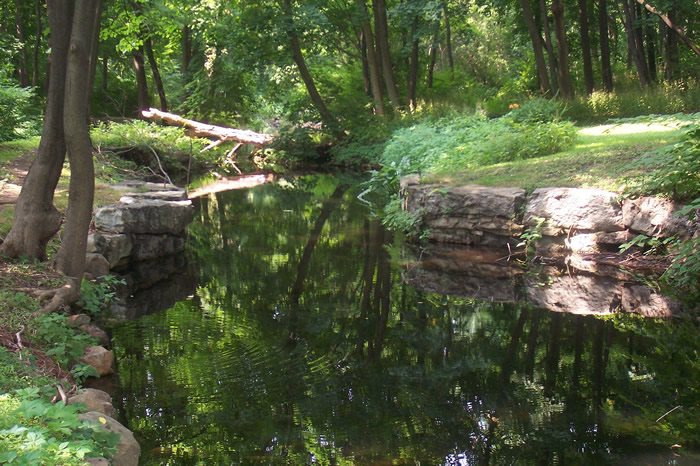
Part of the Morris canal that ran by the mill. The canal stretched from Newark, N.J. on the east, to Phillipsburg, N.J. on the west, where it was incoorporated into part of the Delaware Canal.
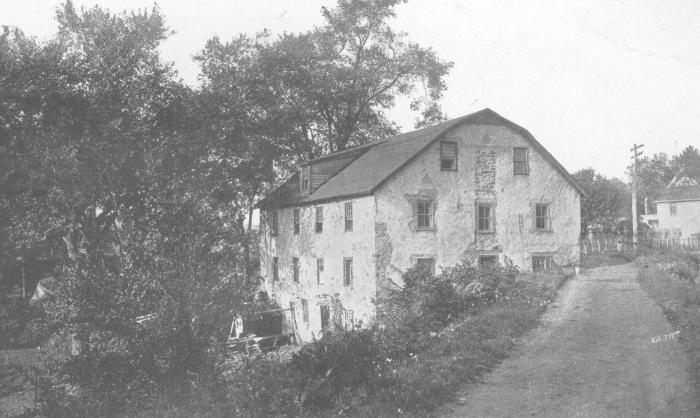
The Stanhope Mill in 1920.The mill was located along the Morris Canal.Locally this is known as the "Plaster Mill".
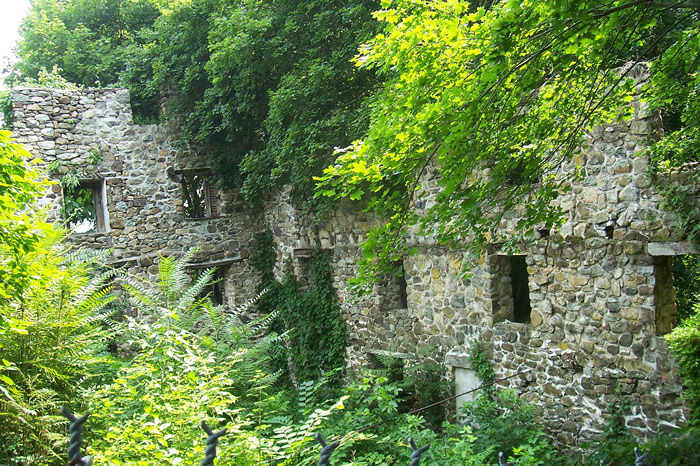
The mill was converted, in 1840, to serve as housing from 1840-1920, for Irish & Eastern European workers in the local iron complex, which included the first anthracite iron blast furnace in New Jersey. In 1835, the iron complex was the Morris & Sussex Company; in 1841, the Stanhope Iron Company; in 1845, the Sussex Iron Company; in 1864, the Musconetcong Iron Works; and in 1902-1926, the Singer Manufacturing Company.
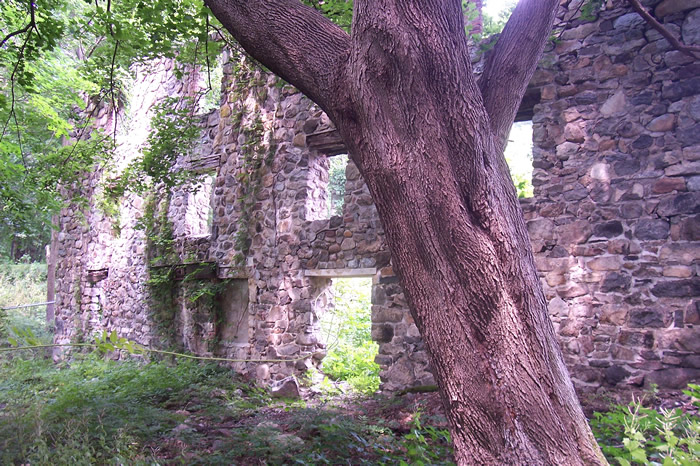
The early iron companies in Stanhope owned large tracts of wooded land and iron mines in Morris, Sussex, & Warren Counties.
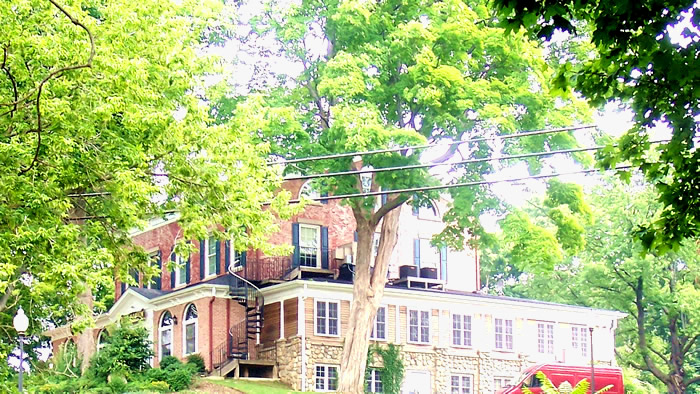
The Bell Mansion was built in 1835-40 by Robert Bell, then owner of Morris Canal & Banking Co. as well as the Mooris & Sussex Iron Company. The 1881 annual production of the Musconetcong Iron Works was 40,000 tons of pig iron.
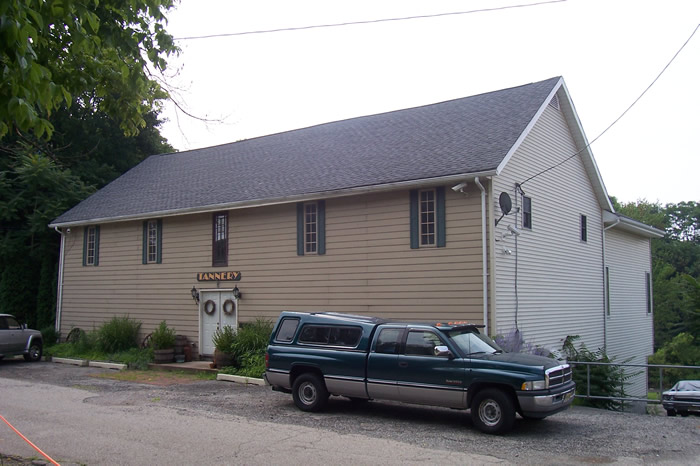
The tannery next to the plaster mill ruins is nearly as old and has been restored to a residence or place of business. The old plaster mill remains are the oldest such for the iron works complex and have been placed on both the State and National Register of Historic Places.